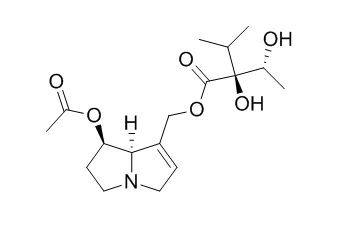| In vitro: |
| Mutat Res. 1988 Aug;203(4):297-308. | | Statistical methods to decide whether mutagenicity test data from Drosophila assays indicate a positive, negative, or inconclusive result.[Pubmed: 3136327] | Two alternative hypotheses are used to distinguish among the possibilities of a positive, inconclusive, or negative result in Drosophila mutagenicity tests. In the null hypothesis one assumes that there is no difference in the mutation frequency between control and treated series. The alternative hypothesis postulates a priori that the treatment results in an increased mutation frequency that is m times the spontaneous frequency.
METHODS AND RESULTS:
To test against the hypotheses, the conditional binomial test according to Kastenbaum and Bowman or the chi 2 test for proportions may be applied. These 2 methods are in principle equivalent. An alternative method which is based on determining confidence limits of observed mutation frequencies also leads to the same conclusions. The practical calculations are formulated and an application is shown with a test example demonstrating the genotoxicity of the pyrrolizidine alkaloid 7-Acetylintermedine in the somatic wing mosaic test. In the Appendix, the calculus for the 3 testing methods is explained with a numerical example. | | J Chromatogr A. 2004 Nov 12;1056(1-2):91-7. | | On-line structure characterization of pyrrolizidine alkaloids in Onosma stellulatum and Emilia coccinea by liquid chromatography-ion-trap mass spectrometry.[Pubmed: 15595537] |
METHODS AND RESULTS:
On-line structure characterization of pyrrolizidine alkaloids in two various plant species (Onosma stellulatum W.K., family Boraginaceae and Emilia coccinea Sims., family Compositae) was performed by a newly elaborated RP-HPLC ion trap MS method with atmospheric pressure chemical ionization (APCI) interface. Different PAs (N-oxides, free bases, otonecine alkaloids) isolated were separated on Waters XTerra C18 column using a gradient elution. The combination of a CE-SPE with multiple isolation and fragmentation steps for specific masses in ion trap MS detector enabled fast and sensitive analysis of various types of PAs (N-oxides and free bases). In O. stellulatum, spectra 12 various types of structures (13 different alkaloids) have been determined for the first time: leptanthine-N-oxide, lycopsamine-N-oxide, heliospathuline, lycopsamine, trachelanthamine-N-oxide, dihydroechinatine, leptanthine, heliospathuline-N-oxide, 7-Acetylintermedine, uplandicine, echimidine and echimidine-N-oxide.
CONCLUSIONS:
In E. coccinea, the following types of PAs were found: platyphylline-N-oxide, platyphylline (three stereoisomers with the same MS(n) spectrum), ligularidine, neoligularidine, neosenkirkine and also previously reported senkirkine. The method elaborated can be applied in the structural analysis of PAs in newly examined plant materials or food products but further analysis is needed to determine the stereochemistry in details. |
|






 Cell. 2018 Jan 11;172(1-2):249-261.e12. doi: 10.1016/j.cell.2017.12.019.IF=36.216(2019)
Cell. 2018 Jan 11;172(1-2):249-261.e12. doi: 10.1016/j.cell.2017.12.019.IF=36.216(2019) Cell Metab. 2020 Mar 3;31(3):534-548.e5. doi: 10.1016/j.cmet.2020.01.002.IF=22.415(2019)
Cell Metab. 2020 Mar 3;31(3):534-548.e5. doi: 10.1016/j.cmet.2020.01.002.IF=22.415(2019) Mol Cell. 2017 Nov 16;68(4):673-685.e6. doi: 10.1016/j.molcel.2017.10.022.IF=14.548(2019)
Mol Cell. 2017 Nov 16;68(4):673-685.e6. doi: 10.1016/j.molcel.2017.10.022.IF=14.548(2019)